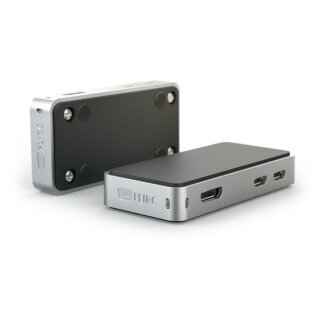

- FLIRC RASPBERRY PI OPENELEC SKIN
- FLIRC RASPBERRY PI OPENELEC FULL
- FLIRC RASPBERRY PI OPENELEC SOFTWARE
- FLIRC RASPBERRY PI OPENELEC LICENSE
One hiccup was that when I moved over the setup to the isolated TV, I found that my small TV/DVD device didn’t have the CEC feature. The other device at the end of the HDMI cable, which is the Raspberry Pi, receives the cursor movement and uses that to navigate the XBMC interface. The cursor movement buttons on most modern TV remotes are received by the TV infrared receiver, and passed through the HDMI cable using this CEC feature. With CEC, I actually didn’t even need a temporary USB/mouse keyboard to set up OpenElec. The Raspberry Pi feature that caught me by surprise is the CEC capability. Who watches those home shopping channels anyway?

FLIRC RASPBERRY PI OPENELEC FULL
I set up the Favorites so I could see a list of channels shorter than the full list of channels available to me. I’ve pre-selected the channels that would appear in the HD Homerun Prime Favorites subfolder through the small web interface exposed by the HD Homerun Prime, the same web interface where you can read the codes off when you set it up with your cable provider over the phone with their tech support. So I added the Favorites subfolder as an XBMC video source. First thing I noticed is that the HD Homerun Prime is detected as a UPnP source.
FLIRC RASPBERRY PI OPENELEC SKIN
There are several XBMC skins out there to customize its appearance, but I just stuck with the standard out-of-the-box skin “Confluence”. I attached a nano-sized WiFi USB dongle (150Mbps), temporarily attached a USB keyboard/mouse, and connected the HDMI port to our main TV for testing. OpenElec can easily fit in an SD card with a small capacity. But that’s why I bought another Pi just for general-purpose tinkering and relegated the first Pi for my isolated TV.
FLIRC RASPBERRY PI OPENELEC SOFTWARE
It’s smaller and customized for a lean media center so a lot of software packages are not present. I installed the OpenElec distribution image. With that, the media center distributions for Raspberry Pi, like RaspBMC and OpenElec, provided all that I needed to switch over to a full UPnP solution to my isolated TV. Another development was that they enabled CEC capability in the HDMI socket on the Raspberry Pi. A lot of cable providers encode their streams as MPEG2 (whilst I think most dish providers use MPEG4).
FLIRC RASPBERRY PI OPENELEC LICENSE
First, they made available a per-unit license for MPEG2 decoding for a low price of £2 (about $4). In 2013, the media center usage for Raspberry Pi took a dramatic upturn. The only way we could get cable into that TV was by using a low-tech A/V sender/receiver that uses some RF frequency – the one that is highly susceptible to microwave signals (that is, the A/V signal craps out when the microwave is in use). Coincidentally, we have a combo TV/DVD there. We have a room in our house that doesn’t have a cable outlet. HD Homerun Prime had this UPnP capability made available in its firmware in late 2013. With this CableCARD and the HD Homerun Prime, your cable tuners (3 in the HD Homerun Prime) are made available to your home network through DLNA/UPnP. It’s normally free for one CableCARD, or sometimes they charge a minimal fee for it like $1/month. Cable providers are required by law to allow you to request a CableCARD if you have a subscription with them. Like TiVo devices, it takes in a CableCARD and attaches to your home router. There’s this cable tuner, called HD Homerun Prime, that you can purchase through the retail market. The things that convinced me to look into it are the developments related to cable TV (i.e., Comcast, Time Warner, FIOS). Since the past holiday season up to today, I have bought two Raspberry Pis, each with an enclosure, all the nifty tiny USB hardware that extends its functionality, and even a real-time-clock extension attaching to the GPIO pins. However, recent developments in late 2013 convinced me that I needed to spend time with this tiny computer. I’ve known how awesome it is, but also know that I didn’t have a lot of time to tinker around with it. I’ve delayed looking into the Raspberry Pi for quite some time now.


 0 kommentar(er)
0 kommentar(er)
